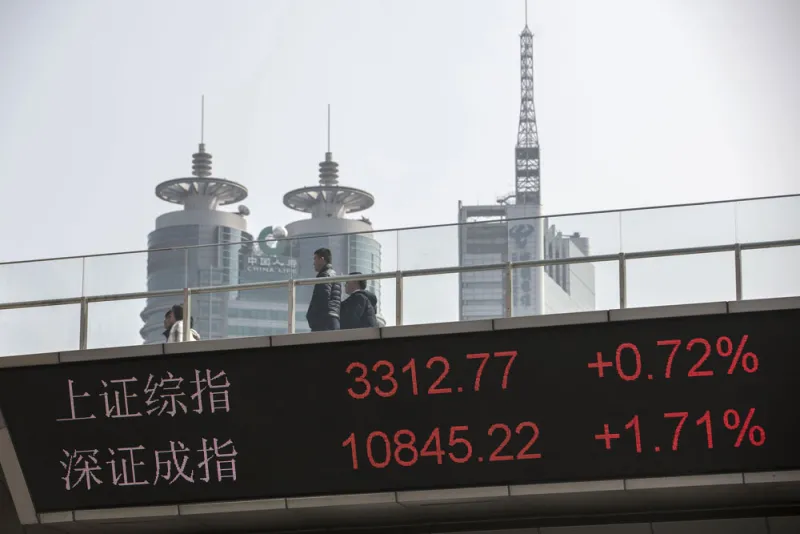Call it what you want — conflict, tensions, or all-out war — but in the year since the U.S. began imposing tariffs on Chinese goods, all eyes have been on trade in Asia.
The protracted battle that began in July 2018 has resulted in three rounds of tariffs on more than $200 billion worth of Chinese imports. It remains the main worry for investors in the region, according to members of Institutional Investor’s 2019 All-Asia Research Team.
“The overriding concern for clients is what happens to the US-China trade relationship,” said Damien Horth, head of Asia Pacific research at UBS. “This is so important for what happens not only to exports and earnings, but also, ultimately, to monetary policy and the degree, globally, to which it can ease.”
The view at Citigroup is that Investors’ fear of a rise in protectionism “is why markets sold off in early 2018,” according to Brent Robinson, the firm’s head of Pan-Asia research. That sell-off was “followed by a rather short period of relief, only to be met with renewed concerns about global trade,” he said.
Linked to these concerns is a slowdown in the tech cycle, which Robinson said was detrimental to both Korea and Taiwan. In those countries, he said the forecast is for tech earnings to fall by more than 30 percent in 2019.
“The real surprise to investors so far in 2019 is that the market at the center of the trade dispute, China, has actually done rather well,” he said. “This has proven to be quite painful for many investors, as surveys show China to be a consensus underweight.”
[II Deep Dive: Trade Wars, AI, and the Transformation of Asia Research]
Another major development during the past year was index provider MSCI’s decision to quadruple the weighting of China A-shares in its emerging markets index, according to William Greene, head of Asia research at Morgan Stanley. “Anticipation of this event in February coincided with the start of a policy easing cycle and caused a significant increase in overseas client activity in A-shares, helping drive the CSI 300 index to significant outperformance relative to the region” in the first quarter of this year, he said.
As investors seek to navigate trade tensions and benchmark changes, they seem to be relying on large global firms such as Citi and UBS, which numbered among the top firms in II’s 26th annual ranking of Asia’s top research providers.
This year’s ranking of research firms — which for the first time weighted voters’ responses by their equity commissions — saw Citi and Morgan Stanley tie for first place. UBS ranked as the No. 3 firm, while Bank of America Merrill Lynch and Credit Suisse took fourth and fifth place, respectively.
The survey included some 5,300 investment professionals at more than 1,300 institutions with major securities holdings in the region, who voted for the top providers across 34 industry sectors and regions.
As part of this year’s survey, three additional leaderboards were produced which ranked firms based on their individual equity analysts and weighted survey responses based on assets under management. In each of these rankings, Citi remained at the top, with Morgan Stanley either tying for first or placing second.
Although Asia appears to still be digesting the effects of Europe’s revamped Markets in Financial Instruments Directive — which unbundled research from trading in January 2018 and forced many investors to cull or streamline their providers — one of the “unintended consequences is that the bulge-bracket houses have tended to be relative beneficiaries of MiFID trends,” according to Robinson.
But the regulatory upheaval is just part of the story, according to UBS’ Horth. “MiFID II has added material complexity to the sell side’s relationship with a segment of our clients but for many others in Asia it has been only of passing interest,” he said. “The larger challenge for both the buy-side and the sell-side has been the cost and complexity of harnessing technology to improve investment processes. We expect this to remain a challenge, particularly as passive funds continue to take sure in the traditional asset management industry.”
Technology is also changing the way clients consume research — presenting both challenges and opportunity for the sell side.
“Our clients’ patterns of consuming research continue to evolve as new tools, technological innovation, and information flows explode,” Robinson said. “Everyone is overwhelmed and must devise strategies to get to the heart of what matters. There is so much news that there is no news. Clients are consuming a lot more thematic and transformative work and working much more closely with decision makers and thought leaders.”







